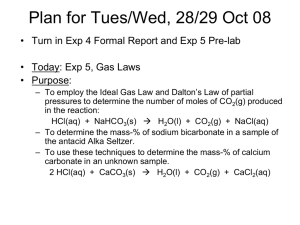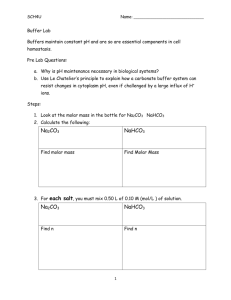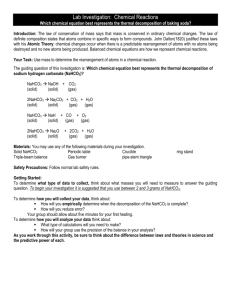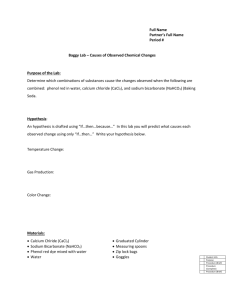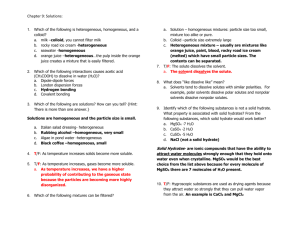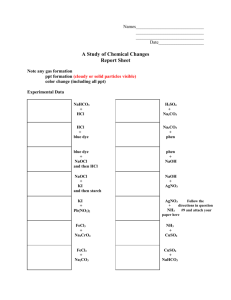The mechanisms associated with skeletal muscle fatigue during
advertisement
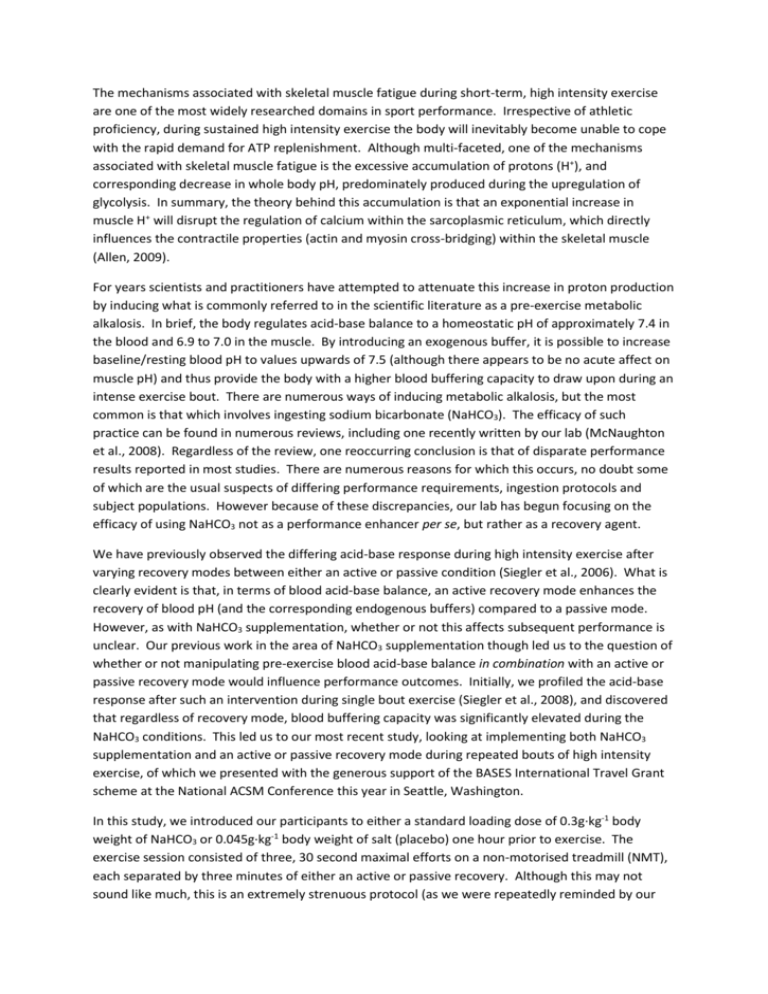
The mechanisms associated with skeletal muscle fatigue during short-term, high intensity exercise are one of the most widely researched domains in sport performance. Irrespective of athletic proficiency, during sustained high intensity exercise the body will inevitably become unable to cope with the rapid demand for ATP replenishment. Although multi-faceted, one of the mechanisms associated with skeletal muscle fatigue is the excessive accumulation of protons (H+), and corresponding decrease in whole body pH, predominately produced during the upregulation of glycolysis. In summary, the theory behind this accumulation is that an exponential increase in muscle H+ will disrupt the regulation of calcium within the sarcoplasmic reticulum, which directly influences the contractile properties (actin and myosin cross-bridging) within the skeletal muscle (Allen, 2009). For years scientists and practitioners have attempted to attenuate this increase in proton production by inducing what is commonly referred to in the scientific literature as a pre-exercise metabolic alkalosis. In brief, the body regulates acid-base balance to a homeostatic pH of approximately 7.4 in the blood and 6.9 to 7.0 in the muscle. By introducing an exogenous buffer, it is possible to increase baseline/resting blood pH to values upwards of 7.5 (although there appears to be no acute affect on muscle pH) and thus provide the body with a higher blood buffering capacity to draw upon during an intense exercise bout. There are numerous ways of inducing metabolic alkalosis, but the most common is that which involves ingesting sodium bicarbonate (NaHCO3). The efficacy of such practice can be found in numerous reviews, including one recently written by our lab (McNaughton et al., 2008). Regardless of the review, one reoccurring conclusion is that of disparate performance results reported in most studies. There are numerous reasons for which this occurs, no doubt some of which are the usual suspects of differing performance requirements, ingestion protocols and subject populations. However because of these discrepancies, our lab has begun focusing on the efficacy of using NaHCO3 not as a performance enhancer per se, but rather as a recovery agent. We have previously observed the differing acid-base response during high intensity exercise after varying recovery modes between either an active or passive condition (Siegler et al., 2006). What is clearly evident is that, in terms of blood acid-base balance, an active recovery mode enhances the recovery of blood pH (and the corresponding endogenous buffers) compared to a passive mode. However, as with NaHCO3 supplementation, whether or not this affects subsequent performance is unclear. Our previous work in the area of NaHCO3 supplementation though led us to the question of whether or not manipulating pre-exercise blood acid-base balance in combination with an active or passive recovery mode would influence performance outcomes. Initially, we profiled the acid-base response after such an intervention during single bout exercise (Siegler et al., 2008), and discovered that regardless of recovery mode, blood buffering capacity was significantly elevated during the NaHCO3 conditions. This led us to our most recent study, looking at implementing both NaHCO3 supplementation and an active or passive recovery mode during repeated bouts of high intensity exercise, of which we presented with the generous support of the BASES International Travel Grant scheme at the National ACSM Conference this year in Seattle, Washington. In this study, we introduced our participants to either a standard loading dose of 0.3g·kg-1 body weight of NaHCO3 or 0.045g·kg-1 body weight of salt (placebo) one hour prior to exercise. The exercise session consisted of three, 30 second maximal efforts on a non-motorised treadmill (NMT), each separated by three minutes of either an active or passive recovery. Although this may not sound like much, this is an extremely strenuous protocol (as we were repeatedly reminded by our participants!). However, in order to increase the potential efficacy of NaHCO3 ingestion, we have found that the exercise effort needs to cause substantially increased levels of acidosis. During the recovery sessions, we obtained capillary samples to observe any blood acid-base buffering differences between exercise conditions. The use of the NMT also allowed us to observe any influence the different conditions had on performance (e.g. power output, sprint speeds, total work completed). Our results illustrated a similar pattern to that of our initial, single effort study with the exception of a more exaggerated difference between conditions. As you can see in Figure 1, blood pH was significantly elevated in both the active and passive NaHCO3 conditions when compared to the placebo conditions for all three recovery bout measurements. Figure 1. Mean pH concentration measured in the blood at the end of 180-s recovery periods from three, 30-s maximal efforts (Bout 1, Bout 2, Bout 3) during each of four experimental conditions. The error bars represent the standard deviations of the means. This pattern held true for the blood buffering measures (bicarbonate and base excess), indicating at least in the blood that there was more potential buffering capacity during both NaHCO3 conditions, regardless of the recovery mode. However, although both the active and passive recovery modes in the NaHCO3 conditions provided significantly elevated buffering capacities, only the active NaHCO3 condition showed a significant increase in performance over the other conditions. The increase in performance, however, was limited to an increase in cumulative average power, while we observed no improvement in peak power or peak and average speeds across conditions. We have been encouraged by our findings, specifically those regarding the improved blood buffering potential in the NaHCO3 passive recovery condition vs. that of the placebo active recovery condition. We believe that this finding may have practical implications, specifically when considering implementing NaHCO3 into a training regimen. For example, when completing multiple sets, either during resistance training or repeated sprints, in order to reach maximal potential on each effort, phosphocreatine (PCr) stores must be replenished. This recovery is prolonged during an active recovery, as PCr resynthesis has been shown to be attenuated by this mode of recovery (Spencer et al., 2008). However, with a passive recovery this process not is restricted. Therefore, with the addition of NaHCO3 supplementation, the recovery may be facilitated even further, thereby shortening the recovery sequence even more. We hope to continue looking into this potential use of NaHCO3 during recovery in future training studies. References Allen, D.G. (2009). Fatigue in working muscles. Journal of Applied Physiology, 106(2), 358-359. McNaughton, L.R., Siegler, J., Midgley, A. (2008). Ergogenic effects of sodium bicarbonate. Current Sports Medicine Reports, 7, 230-236. Siegler, J.C., Bell-Wilson, J., Mermier, C., Faria, E., Robergs, R.A. (2006) Active and passive recovery and acid-base kinetics following multiple bouts of intense exercise to exhaustion. International Journal of Sport Nutrition and Exercise Metabolism, 16(1), 92-107. Siegler, J.C., Keatley, S., Midgley, A.W., Nevill, A.M., McNaughton, L.R. (2008). Pre-exercise alkalosis and acid-base recovery. International Journal of Sports Medicine, 29, 545-551. Spencer, M., Dawson, B., Goodman, C., Dascombe, B., Bishop, D. (2008). Performance and metabolism in repeated sprint exercise: effect of recovery intensity. European Journal of Applied Physiology, 103(5), 545-552. Bio (again, from the website – let me know if you need something else) Jason arrived from the US in August of 2006, after a 2 year post in the Exercise Science Department at Brooklyn College in Brooklyn, NY. He currently lectures in Exercise Physiology, Environmental Physiology and Fitness Training Principles. His post graduate education includes a Master's of Science degree from the University of Montana and a Doctorate from the University of New Mexico, both in Exercise Physiology. He also has a background in Sports Rehabilitation from the University of Connecticut, and is a certified Athletic Trainer.
